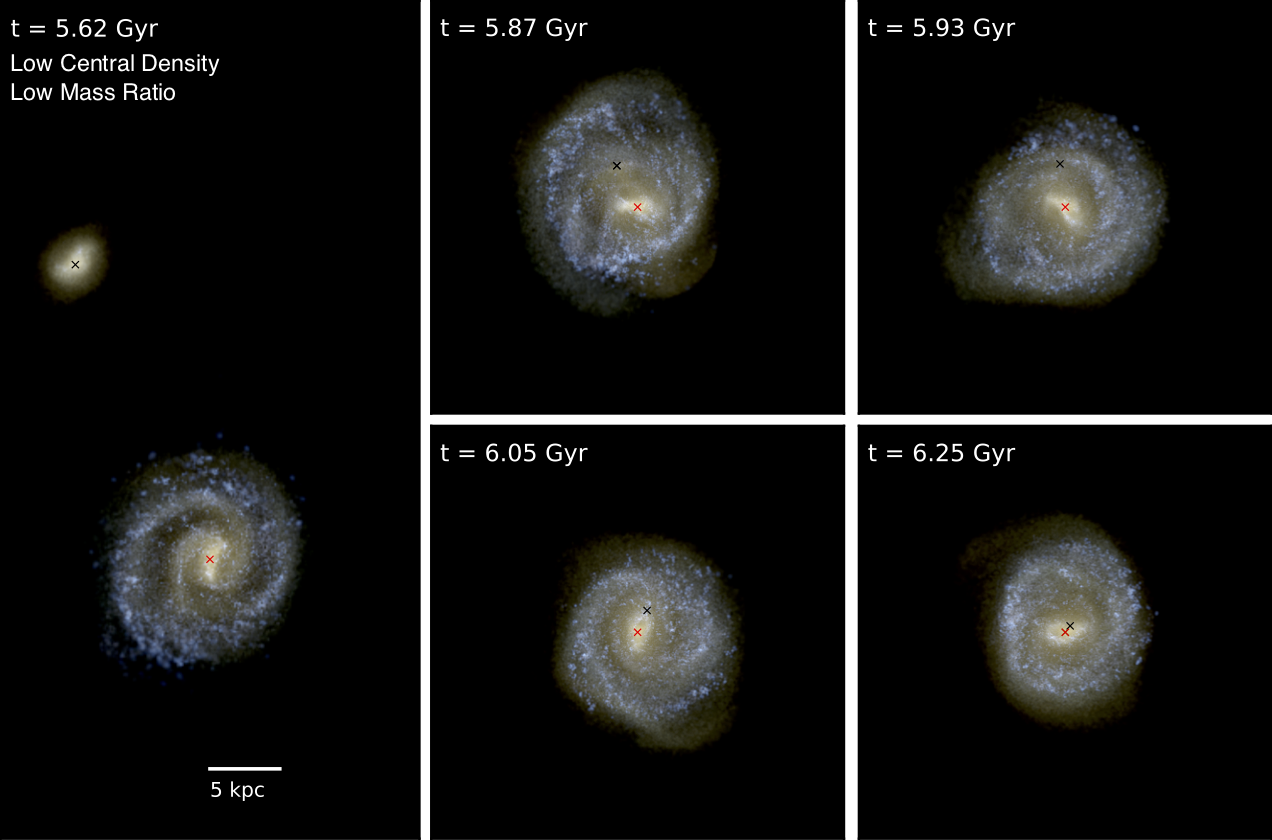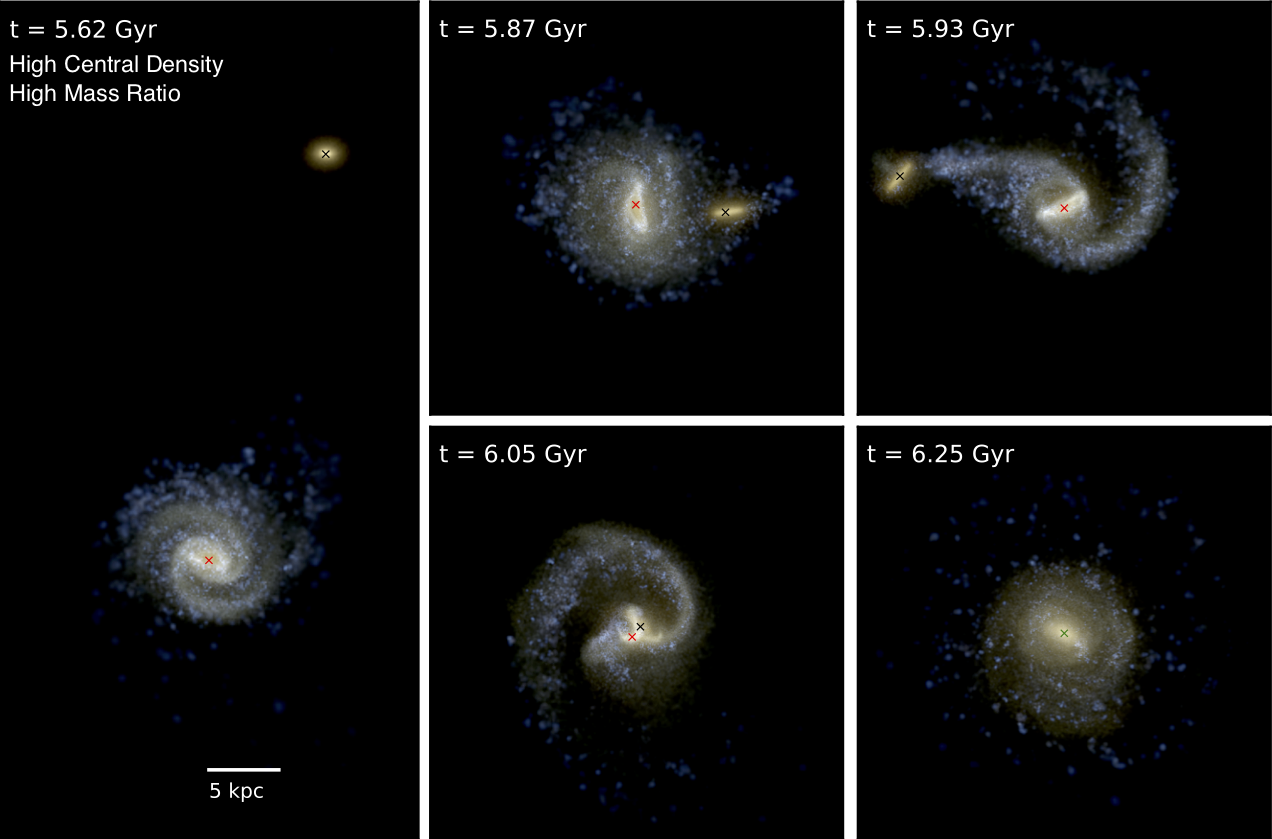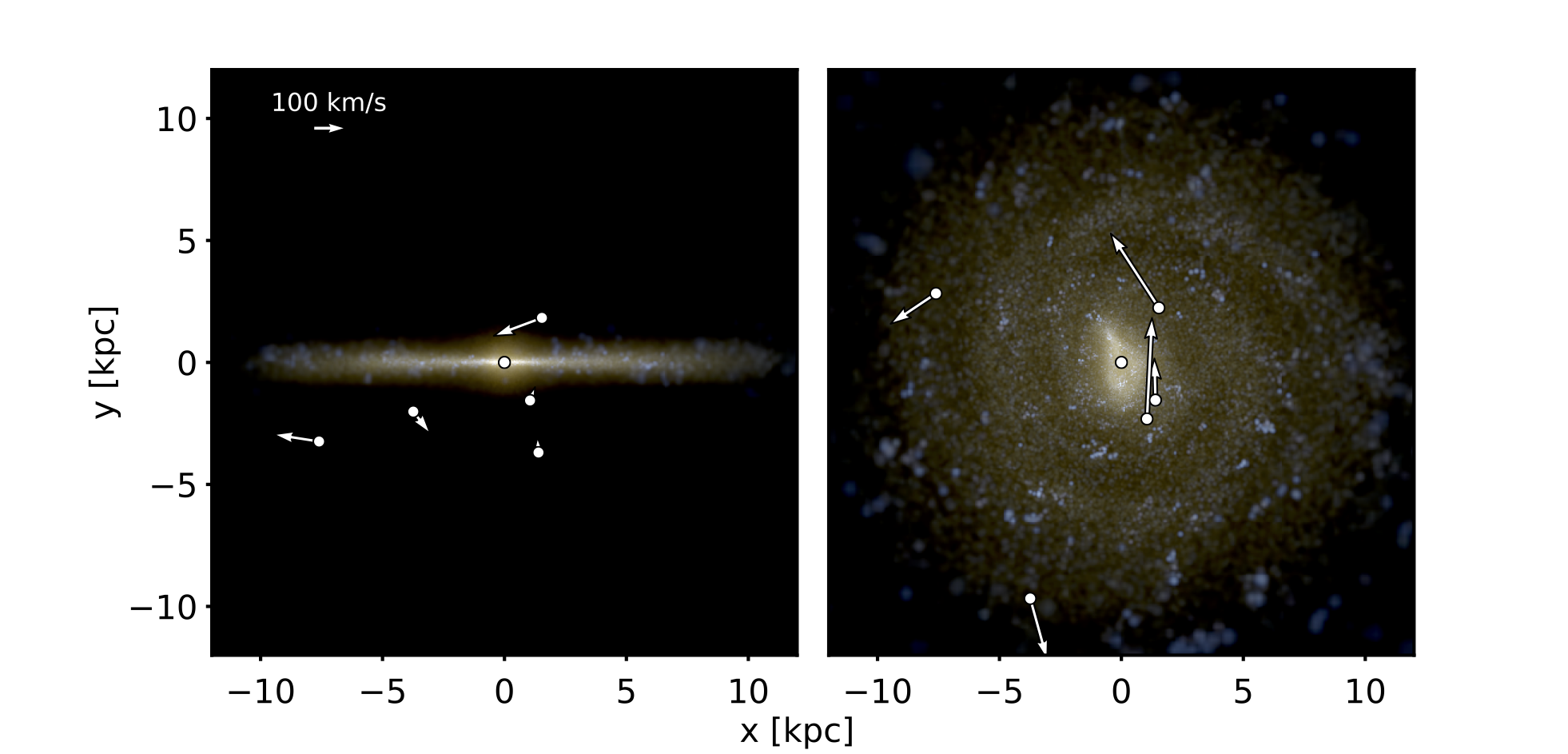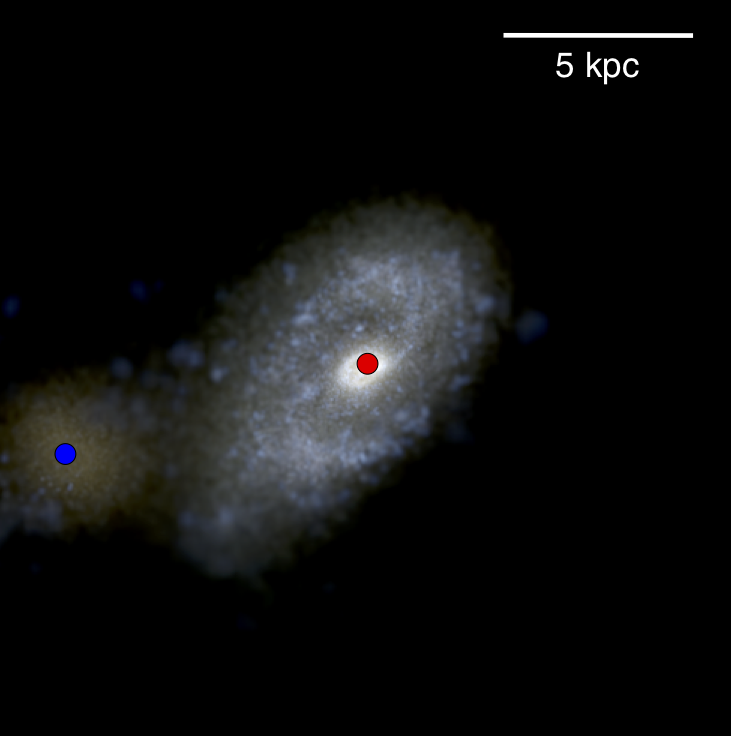Supermassive Black Hole Dynamics
Studying the orbital evolution of SMBHs within galaxies
Overview
SMBHs form in the centers of young galaxies in the early Universe. These young galaxies are the "building blocks" of more massive galaxies and, as these smaller galaxies merge to form larger and larger galaxies, their SMBHs are thought to form binary systems and eventually merge, emitting gravitational waves that we will be able to detect with future space-based observatories like LISA. Understanding where and when these mergers are likely to take place will be critical to understanding and interpretting gravitational wave data, which, given the proper theoretical context, will provide a unique view into SMBH evolution through cosmic time. To accomplish this we need a better understanding of how SMBHs move within their host galaxies. With cosmological simualtions that utilize the new Dynamical Friction model I've developed, I study SMBH orbital evolution within galaxies in a way that has never before been possible. This is work I do in collaboration with Marta Volonteri (Institut d'Astrophysique de Paris), Andrew Pontzen (University College London), and Tom Quinn (U of Washington).
Formation of Close SMBH Pairs
It is commonly thought that when two galaxies merge, their respective SMBHs will also merge relatively quickly. Using the Romulus25 cosmological simulation, we can examine how often and after how long SMBHs form close pairs (the precursors to SMBH binaries and mergers) after their galaxies merge. We find that the formation of close pairs (and therefore also SMBH mergers) is actually rather uncommon and often takes billions of years following galaxy mergers.


The morphology and relative mass of merging galaxies affects how long it takes SMBHs to sink to the center of their new host galaxy and form a close pair. It is a common occurance for galaxies to become stripped and deposit their SMBHs on wide orbits that take billions of years to decay to galaxy center. Sometimes, they never make it to the center, resulting in a population of "wandering" SMBHs in massive galaxies. This significant timescale can have serious implications for our models of SMBH mergers and predictions/interpretations of future gravitational wave observations.
Wandering SMBHs
Massive galaxies are formed as a result of a rich merger history. Often, SMBHs are deposted in the galaxy as a result of those mergers and some of these SMBHs will take a long time to reach the center of the galaxy, sometimes longer than the age of the Universe. These SMBHs create a population of off-center, "wandering" SMBHs in massive galaxies.

By analyzing 26 Milky Way-mass galaxies in Romulus25, we find that they host several SMBHs on average. These SMBHs are generally out of the plane of the galactic disk and their number is independent of galaxy morphology or recent merger history.
Dual and Offset AGN
Active galactic nuclei (AGN) are commonly observed through cosmic time and are now understood to be powered by accreting SMBHs. More recently, there has been a growing sample of active nuclei that exist offset from the centers of galaxies and even some cases where galaxies host two nuclei. If SMBHs involved in mergers do take substantial time to reach the center of the galaxy and merge, they may encounter gas that can fuel their growth. Understanding how these offset/dual AGN are connectec with a previous merger event requires simulations like Romulus that are able to accurately track the dynamics of SMBHs. By studying these events in Romulus, we can gain a clearer picture of what can be learned from observing such systems.


© 2018 Michael Tremmel | Based on the template design by Andreas Viklund